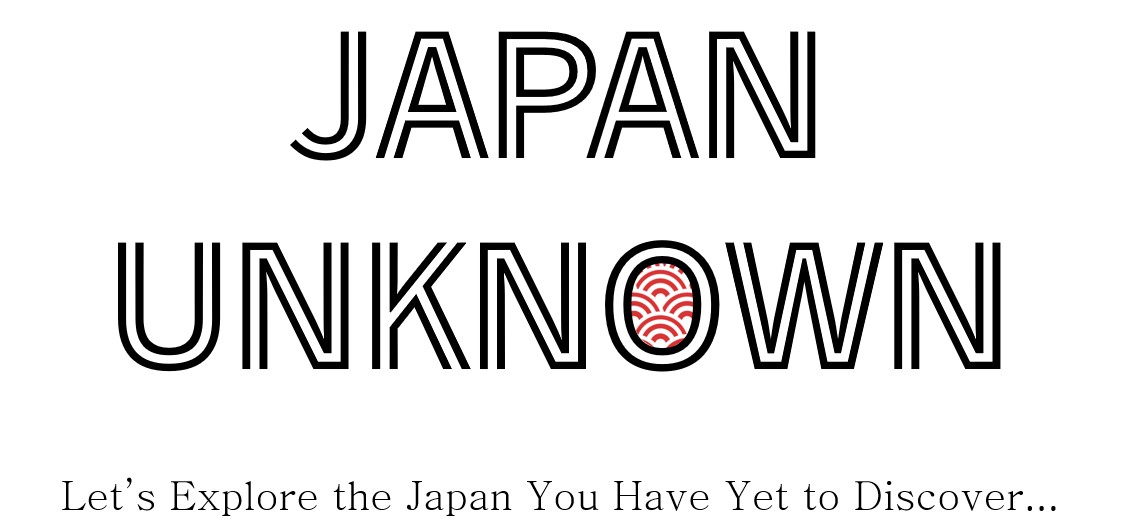Iwate Prefecture | A Timeless Landscape Woven from Nature and Tradition
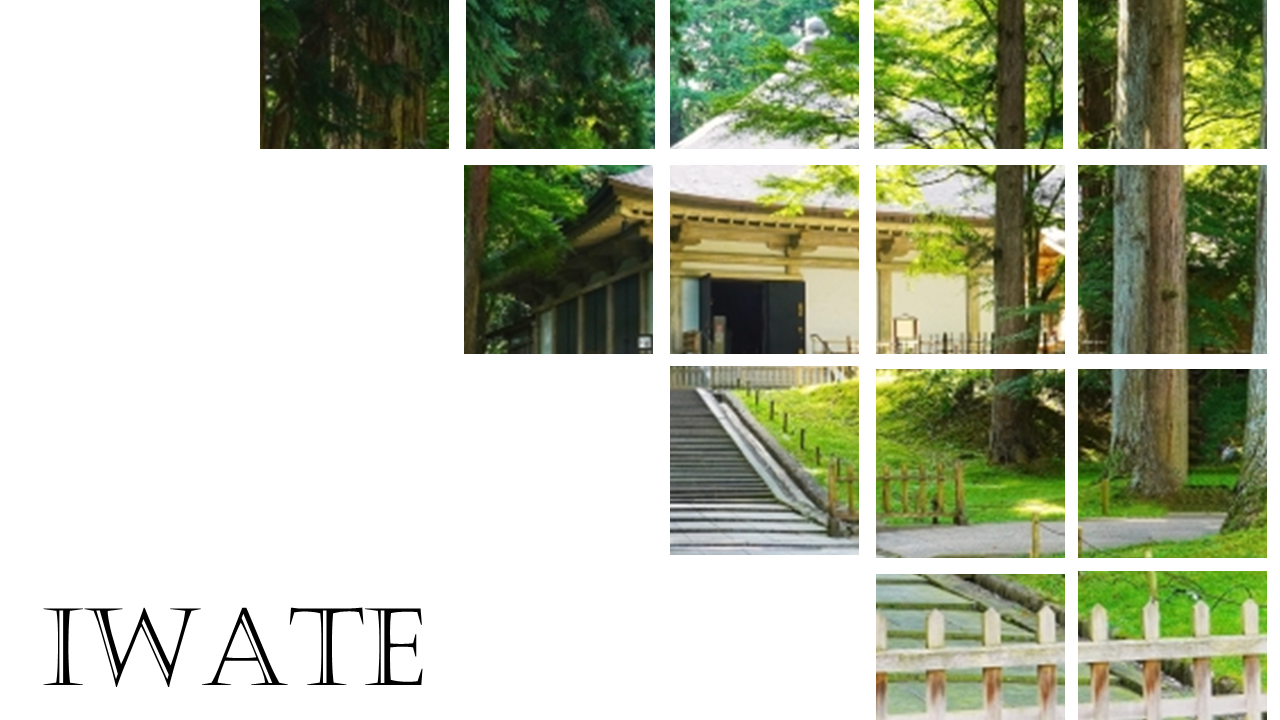
Iwate Prefecture | A Timeless Landscape Woven from Nature and Tradition
Iwate, the second largest prefecture in Japan after Hokkaido, is blessed with a tranquil climate surrounded by mountains, and holds within it a deep well of history and culture.
Hiraizumi, home to UNESCO World Heritage sites such as Chūson-ji and Mōtsū-ji, preserves the legacy of the Buddhist culture that once flourished in this region. In the southeastern part of the prefecture lies Tōno, where old folktales and customs remain deeply rooted, and time-honored festivals and traditions are still observed today. The scenery, reminiscent of Japan’s original landscape, evokes a nostalgic sense of peace.
At the heart of Iwate stands Mount Iwate, the symbol of the prefecture.
Also known as “Nanbu Fuji” for its graceful, Fuji-like silhouette, this majestic mountain has long watched over the lives of the people below.
At its foot thrives a rich tradition of craftsmanship passed down through generations.
Nanbu ironware, known for its dignified beauty and practicality, grows more refined with use and continues to be cherished by many.
Another treasured craft is Jōbōji lacquerware, renowned for its lustrous black finish and delicate artistry—a proud testament to Iwate’s heritage.
A place where harsh yet beautiful nature harmonizes with human artistry, Iwate is a land of quiet strength and enduring tradition.
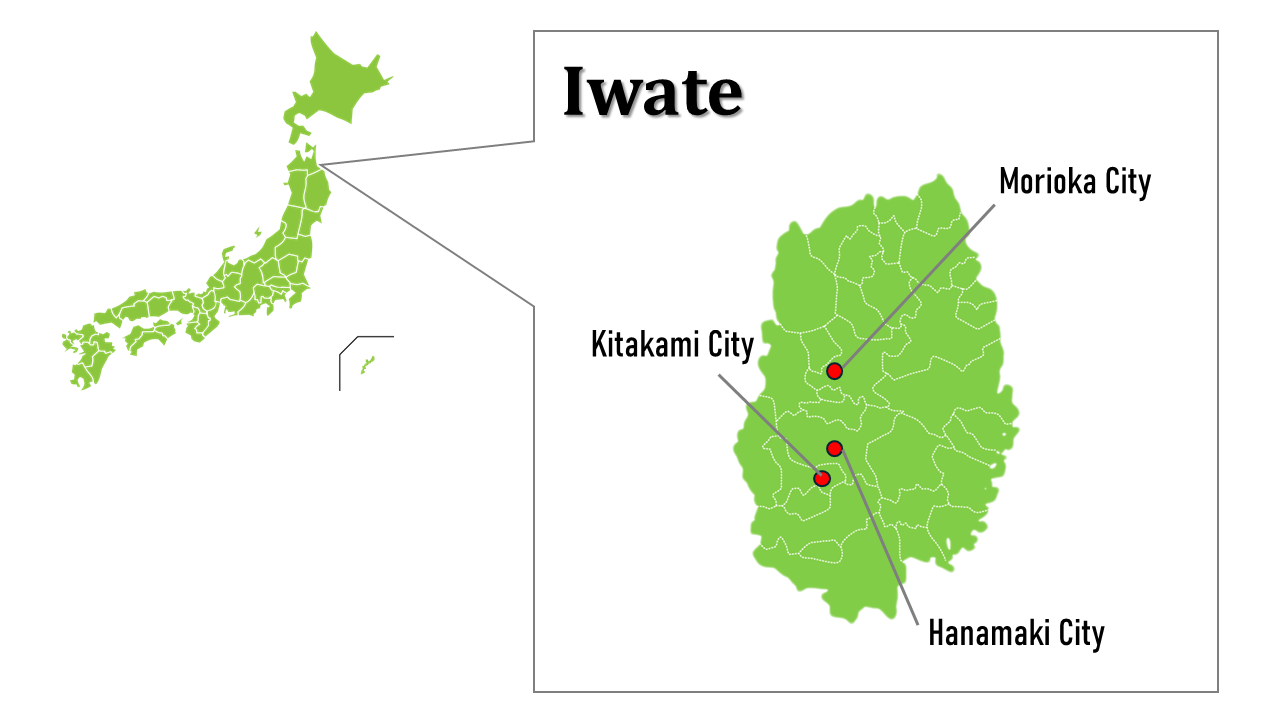
Prefectural capital
- Morioka City
Major Cities
- Morioka city
- Hanamaki city
- Kitakami city
Population
- Approximately 1.2 million
Major Tourist Attractions and Events
- The Chūson-ji Konjiki-dō (UNESCO World Heritage Sites)
- Ryūsendō Cave
- Sanriku Coast
- Hanamaki Onsen
- Wanko Soba
Local Cuisine
-
Wanko-soba – small-portioned buckwheat noodles
-
Maesawa-gyū – Maesawa beef
Craft Works
- Nambu tetsuki – Nambu cast ironware
- Joboji lacquerware
- Hidehira lacquerware
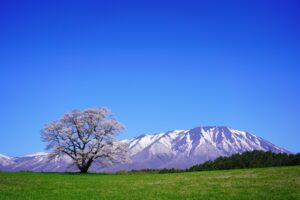
A solitary cherry tree standing on the lush green fields of Koiwai Farm, with the majestic Mt. Iwate in the background.
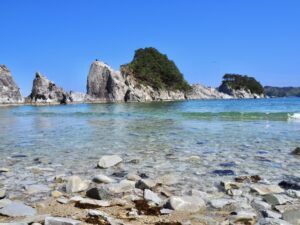
Jōdogahama, whose name means “Pure Land Beach,” is renowned for its serene, otherworldly beauty—like a glimpse of paradise.
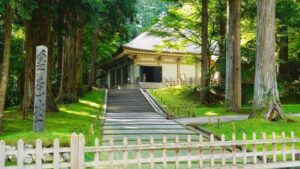
Chūson-ji Konjikidō (Golden Hall), a UNESCO World Heritage Site
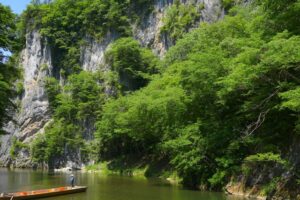
Geibikei Gorge – a scenic spot where you can enjoy a breathtaking boat ride through towering cliffs and tranquil waters.
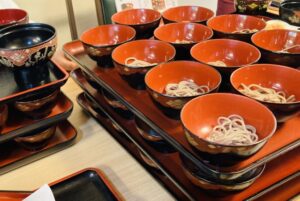
Wanko Soba – a traditional local dish of Iwate Prefecture
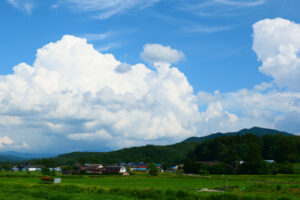
Tōno – a timeless village that preserves the nostalgic beauty of Japan’s rural heritage.
Articles about Iwate
